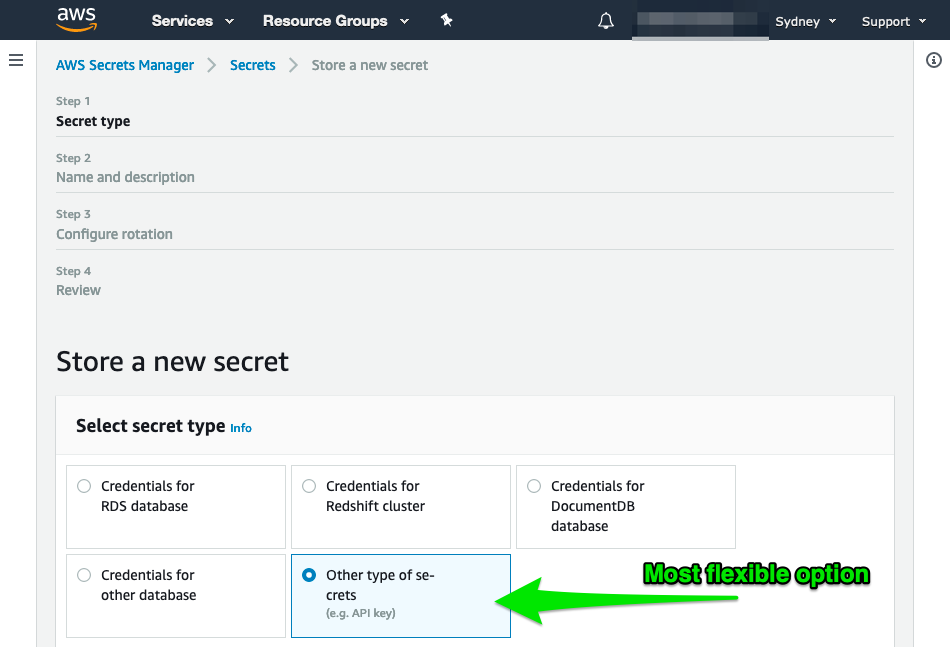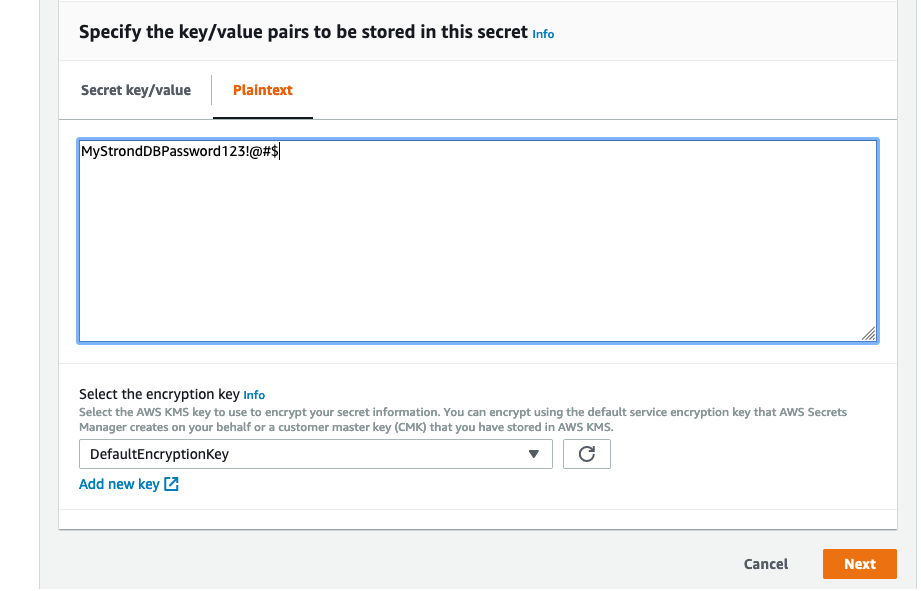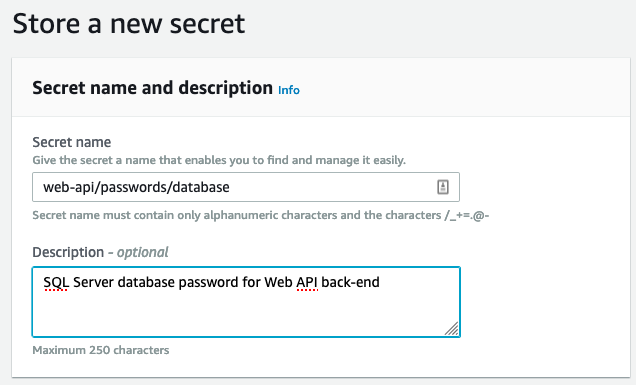How to use AWS Secrets Manager to store & read passwords in .Net Core apps
11 Jul 2019
More often than not your application needs to have access to various sensitive information, such as logins & passwords of various sorts (database, network resources etc), API keys, encryption keys and alike.
In one of my earlier articles, I demonstrated how that information can be stored in an encrypted way in the application config file – see How to store login details securely in the application config file. This approach, however, is not fool-proof. In fact, it’s quite easy to decrypt the information stored in such a way, provided the attacker has access to the executable with the decryption key.
In this article, I would like to show you a much more secure way of storing and accessing sensitive information – such as usernames and passwords, encryption keys, API keys etc. This method will come particularly handy if you already rely on AWS for some of your application needs.
Looking for a Microsoft Azure-specific solution to store & read your passwords? Check out this article: “How to securely store and retrieve sensitive info in .NET Core apps with Azure Key Vault”
Storing a secret
Creating a secret is easy:
- First of all, login to AWS console, and then type “Secrets Manager” in the search box.
- Navigate to Secrets Manager, and click on “Store a new secret” button
- Select “Other type of secrets”

You can both supply a free-text value for the secret, as well as provide a JSON-formatted data (this will need to be de-serialised by your app later). JSON is preferable if you want to store a complex structure, however, if you have just a password to store, replace everything in that text box with your secret string:

Next step is to name the secret. You may want to use some form of “path emulation” in your secrets
naming. For example, web-api/passwords/database may store a DB password used by your Web API
back-end, and worker/password/web-api-key for your worker app, that calls Web API and needs an API
key. Having a simple naming convention helps when you have several secrets to keep the track of.

Secret access control
Unfortunately, secret access control is a big topic that is outside of this article. I am going to assume that you already have a user or a role set up in AWS that has corresponding permissions to access AWS Secrets Manager.
In case you need to get that sorted first, check out this article - “Authentication and Access Control for AWS Secrets Manager”. But in short, you’ll need to:
- Create a new user or a role (or use an existing one)
- Assign an IAM policy to that user/role that allows accessing this secret
If this proves to be problematic, leave a comment below, or shoot me an email, and I’ll write a separate article on how to do that.
Reading the secret from your app
Finally, the fun part! First of all, your .NET Core app needs to reference AWSSDK.SecretsManager
NuGet package. To do that, in your terminal of choice navigate to your project folder and run the
following command:
dotnet add package AWSSDK.SecretsManagerNext, the following code will connect to AWS and retrieve the secret:
// ... bunch of code skipped for brevity...
//
// accessKeyId, secretAccessKey are normally set in your env vars
//
var client = new AmazonSecretsManagerClient(accessKeyId, secretAccessKey, RegionEndpoint.APSoutheast2);
var request = new GetSecretValueRequest
{
// this gets your secret name, 'web-api/passwords/database' in our case
SecretId = secretName
};
GetSecretValueResponse response = null;
try
{
response = client.GetSecretValueAsync(request).Result;
}
//
// Exceptions are taken from AWS SDK API Reference here:
// https://docs.aws.amazon.com/secretsmanager/latest/apireference/API_GetSecretValue.html#API_GetSecretValue_Errors
//
// Setting breakpoints inside every exception handler can help you identify what's
// wrong in each individual situation.
//
catch (DecryptionFailureException e)
{
// Secrets Manager can't decrypt the protected secret text using the provided KMS key.
throw;
}
// ... bunch of catch code skipped for brevity...Some critical moments to call out here:
accessKeyIdandsecretAccessKeyare meant to contain valid access credentials. Generally, your EC2 instance will have environment variablesAWS_ACCESS_KEY_IDandAWS_SECRET_ACCESS_KEYcontaining those. You can skip these parameters, and it will force theAmazonSecretsManagerClientto use the environment variables.- It is important to specify the correct AWS Region where your secret is stored, either via
AmazonSecretsManagerClientcall as above or by setting the default region, like so:AWSConfigs.AWSRegion = RegionEndpoint.APSoutheast2.SystemName;
It’s quite likely that your app won’t retrieve the secret correctly the first time you test it. Don’t despair - security is a tricky area. There are quite a few hoops to jump through:
- your IAM user’s policy needs to be set up correctly
- your app needs to get its creds (Access Key & Secret Access Key)
- your app needs to supply those creds to the manager
To troubleshoot any issues, set breakpoints in every catch clause (there’s a few, see the link
above for all possible exceptions, or download the code below). Run your app in the debugger and see
which error you get. Inspect the exception object in detail, as it will contain details of the
particular issue you’re having. Alternatively, add ample logging.
Conclusion
In this article, I demonstrated how you can store secrets using AWS Secrets Manager, how to retrieve
them using AmazonSecretsManagerClient from AWSSDK.SecretsManager package and how to troubleshoot
any issues you may have.
Leave a comment below if you have any issues or questions!
Get complete, tested, and working source code for this article
Download fully tested and 100% working Visual Studio solution with the source code used in this article for FREE – just enter your name and email in the form below, and I’ll send you the download link right away.
You will also get access to all the source code for all existing and new articles on the site, and access to my mailing list, which receives handy timesaving tips on .NET Core programming.